Tele Message

How do I recognize a scam call or message ?
Scam calls and messages are becoming increasingly common, and it's important to be able to recognize them in order to protect yourself from fraud. Here are some tips on how to identify a scam call or message: 1\. **Unusual Requests for Personal Information** 2\. **Urgent or Threatening Language** 3\. **Unfamiliar Names or Organizations** 4\. **Requests for Money or Payment** 5\. **Poor Grammar and Spelling** 6\. **Sensational Prizes or Offers** 7\. **Verification Through Unofficial Channels** 8\. **Unsolicited Emails or Messages with Links** 9\. **Odd Timing** 10\. **Immediate Action Required**

What should I do if I receive a suspicious call or message ?
Receiving a suspicious call or message can be unsettling and potentially dangerous. It is important to take appropriate measures to protect yourself and your personal information. The steps you should take when you encounter such situations are: 1. Remain calm and assess the situation objectively. 2. Do not share any personal information with the caller or sender of the message. 3. End the call or delete the message without engaging in any conversation. 4. Block the number or email address that contacted you. 5. Report the incident to the appropriate authorities, such as your local police department or the Federal Trade Commission (FTC). 6. Be vigilant and educate others about the risks of sharing personal information over the phone or through messages. By following these steps, you can minimize the risk of falling victim to scams and fraud attempts.
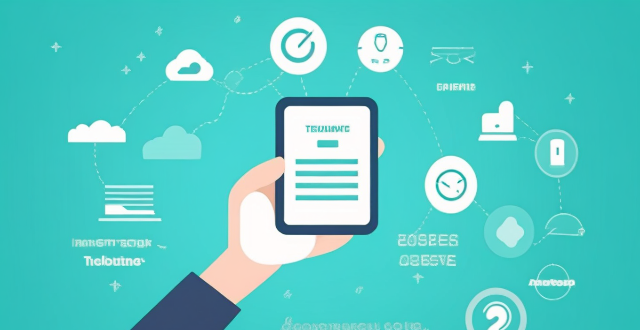
How can I protect myself from telecommunications fraud ?
Telecommunications fraud is a serious issue that can have devastating consequences for victims. It involves unauthorized access to personal and financial information through various communication channels such as phone calls, text messages, emails, and social media platforms. To protect yourself from telecommunications fraud, you should be wary of unsolicited calls and messages, use strong passwords and two-factor authentication, keep your devices and software up-to-date, be cautious with financial transactions, educate yourself and stay informed about the latest scams and fraudulent activities. By following these tips, you can significantly reduce your risk of falling victim to telecommunications fraud.

What are the most common types of telecommunications fraud ?
Telecommunications fraud is a serious issue that affects millions of people worldwide. It involves using technology to deceive individuals or organizations for financial gain. Here are some of the most common types of telecommunications fraud: 1. Phishing Attacks: In this type of attack, cybercriminals send fraudulent emails or messages that appear to be from a legitimate source, such as a bank or a government agency. The message typically asks the recipient to click on a link or provide sensitive information, such as login credentials or credit card details. Once the victim provides the requested information, the attacker can use it to access their accounts and steal money or personal data. 2. Vishing Attacks: In this type of attack, cybercriminals use automated phone calls or live callers to trick victims into providing sensitive information over the phone. The attacker may pretend to be from a legitimate organization, such as a bank or a government agency, and ask for personal information or payment for a fake service. 3. Smishing Attacks: Smishing, or SMS phishing, is a relatively new form of telecommunications fraud that involves sending fraudulent text messages to victims' mobile devices. These messages often claim to be from a legitimate source, such as a bank or a government agency, and ask for sensitive information or payment for a fake service. Unlike traditional phishing attacks, which rely on email, smishing attacks use SMS messages to reach victims directly on their mobile devices.

Is there a way to block unwanted calls and messages on my iPhone ?
The text discusses various methods to block unwanted calls and messages on an iPhone, including using the built-in blocking feature in the Phone and Messages apps, setting up Do Not Disturb to only allow calls from contacts, and utilizing third-party apps such as Hiya, Mr. Number, and Truecaller. Additionally, it provides tips for reporting spam, keeping contacts updated, and being cautious with third-party apps due to potential privacy concerns and fees.

What happens if I enter an invalid coupon code ?
When you enter an invalid coupon code during an online transaction, the following scenarios may occur: 1. Error message 2. No discount applied 3. Limited attempts 4. Customer support In summary, entering an invalid coupon code may result in an error message, no discount being applied, limited attempts to enter a code, and the need for customer support assistance.

How can I prevent my personal information from being used in telecommunications fraud ?
To protect your personal information from telecommunications fraud, follow these steps: be cautious with personal information, use strong passwords and two-factor authentication, keep software and devices updated, be wary of suspicious emails and links, and educate yourself about common scams. By taking these precautions, you can reduce the risk of falling victim to telecommunications fraud.

What are the common causes of communication interference ?
Communication interference can occur due to physical barriers like noise and technology issues, language differences, cultural norms, emotional factors, personal biases, misunderstandings, lack of active listening, and poor message construction. Being aware of these causes can help individuals improve their communication skills and minimize disruptions in various contexts.
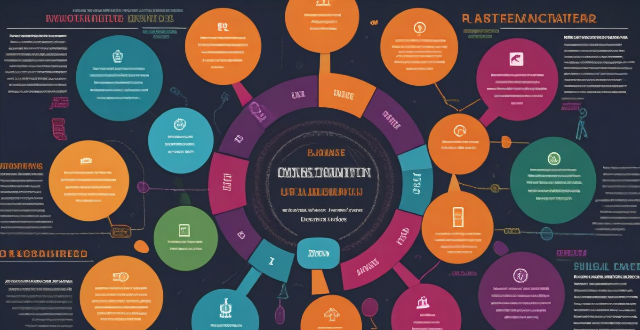
How do I choose the right color scheme for my infographic ?
When designing an infographic, choosing the right color scheme is crucial. Consider the purpose and audience of your infographic to guide your color choices. Understand basic color theory principles to create a harmonious color scheme. Be mindful of the psychological effects of color and cultural associations. Choose a color palette with primary, accent, and background colors. Test and refine your color scheme to ensure it effectively conveys your message and captures your audience's attention.

How do I write persuasively and convincingly ?
The provided text offers a comprehensive guide on how to write persuasively and convincingly. It emphasizes the significance of understanding one's audience, conducting thorough research, organizing thoughts clearly, developing a compelling narrative, using persuasive language techniques, addressing potential objections, editing and revising work, and practicing active reading strategies. The tips are designed to help writers craft effective arguments, engage their readers emotionally and rationally, and enhance their overall writing skills.

What are some tips for creating an infographic on a tight budget ?
Creating an infographic on a tight budget requires careful planning, use of free design tools, simplicity, repurposing existing visuals, creative data representation, and seeking feedback for iteration.

Can I report telecommunications fraud to any authority ?
Telecommunications fraud is a serious issue that can have significant financial and personal consequences for victims. It is important to know where and how to report such incidents to ensure that appropriate action is taken. In this article, we will explore the various authorities to which you can report telecommunications fraud. The Federal Communications Commission (FCC) is the primary agency responsible for regulating interstate and international communications by radio, television, wire, satellite, and cable in the United States. The FBI is responsible for investigating federal crimes, including telecommunications fraud. Each state has an attorney general who is responsible for protecting consumers within their jurisdiction. Local law enforcement agencies also have the authority to investigate complaints and work with other agencies to pursue legal action against those responsible for fraudulent activities.

How can I educate my family about telecommunications fraud ?
Telecommunications fraud is a serious issue that can have devastating consequences for individuals and families. To protect themselves from becoming victims, it's important to educate loved ones about the risks and ways to avoid them. Here are some steps to follow: Understanding Telecommunications Fraud: Make sure everyone understands what telecommunications fraud entails and how it works. This includes phishing scams, vishing attacks, smishing schemes, and tech support scams. Recognizing Red Flags: Educate your family on the common signs of telecommunications fraud, such as urgency, unexpected requests, too good to be true offers, threats or intimidation. Prevention Tips: Share prevention tips with your family to help them avoid falling prey to scams. These include staying informed, verifying sources, securing devices, using anti-fraud tools, being cautious online, limiting personal exposure, and reporting suspected fraud. Action Plan: Create an action plan for your family in case they encounter a potential fraud attempt. This includes stopping and thinking before acting impulsively, consulting family members for a second opinion, contacting authorities if convinced it's a scam, and documenting everything related to the suspected fraud for future reference.

How do communication satellites impact the field of telecommunications ?
Communication satellites have revolutionized telecommunications by providing global connectivity, increasing bandwidth, and improving reliability. They allow for communication across vast distances, connecting remote areas with the rest of the world and providing access to telecom services in regions lacking terrestrial infrastructure. Modern satellite systems offer high data rates for faster internet speeds and better voice/video transmissions, supporting multiple services like voice, data, and video conferencing. Satellites also enhance reliability and redundancy as critical backups during disasters and emergencies, creating diverse communication pathways. With rapid deployment capabilities, satellites are ideal for temporary situations like military operations or emergency responses and enable mobile applications. Economically, advancing technology reduces costs, opens new markets, and fosters job creation. Technological advancements include improved modulation techniques and antenna designs for better performance. Environmental considerations involve space debris mitigation and energy efficiency. Overall, satellites significantly impact telecommunications by extending reach, increasing capacity, ensuring reliability, offering flexibility, driving economic growth, and fostering technological advancements while considering environmental implications.

How can I check my data usage on my current mobile operator's plan ?
This is a step-by-step guide on how to check your data usage on your mobile operator's plan. The first step is to access your mobile operator's self-service portal and log into your account. Once logged in, navigate to the data usage section where you can find information about your current balance, recent transactions, and data usage. The second step is to use USSD codes provided by some mobile operators that allow you to dial a code from your phone to get information about your data usage. Follow the instructions carefully after dialing the USSD code. The third step is to check through SMS by sending a specific message to a specific number provided by your mobile operator. You will receive a response message with details about your remaining data balance and validity period. If none of these methods work, you can contact customer support by calling or chatting with them online. They may ask for some verification details before providing the information. Lastly, you can use third-party apps available on app stores that can help you track your data usage and provide regular updates.

How does Apple's Activation Lock help in recovering a lost iPhone ?
Apple's Activation Lock is a feature that helps protect your iPhone from unauthorized use and theft. It is part of the Find My app, which allows you to locate your lost or stolen device on a map, play a sound to help you find it, use Lost Mode to lock and track it, or remotely erase all of your personal information. Activation Lock works by automatically enabling once you turn on Find My [device] on your iPhone, iPad, iPod touch, or Mac. This means that if someone tries to erase or reactivate your device, they need your Apple ID and password. Without this information, they cannot use or sell your device. The Find My app also allows you to see the location of your lost device on a map, play a sound on it to help you find it, put it in Lost Mode to lock it with a passcode and display a custom message with your phone number on the Lock screen, track its location and get automatic notifications when it moves, and remotely erase all of your personal information. If someone finds your lost iPhone and sees the custom message you've set up in Lost Mode, they can contact you to return it. Once you have your iPhone back, you can simply enter your passcode to reactivate it. In conclusion, Apple's Activation Lock is a powerful tool that helps protect your iPhone from unauthorized use and theft. By enabling Find My [device] and using the features of the Find My app, you can increase the chances of recovering your lost iPhone and keeping your personal information safe.

How can young people get involved in climate action advocacy ?
Young people play a crucial role in advocating for climate action by educating themselves and others, joining youth climate movements, attending climate strikes and protests, using social media to spread the message, and volunteering with environmental organizations.
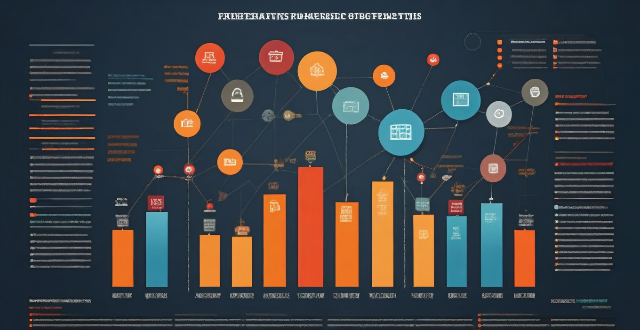
What are the key elements of an effective infographic ?
An effective infographic should convey complex information in a clear, concise, and visually appealing manner. The key elements of an effective infographic include a clear purpose, concise and relevant information, visual hierarchy, compelling visuals, consistent design, interactive elements (optional), call to action (CTA), and accessibility. By incorporating these key elements, you can create an effective infographic that not only looks good but also effectively communicates its intended message to the target audience.

How do I remove a device from my Apple account ?
Removing a device from your Apple account is a straightforward process that can be done in just a few steps. First, sign in to your Apple ID account page by going to [appleid.apple.com](https://appleid.apple.com) and entering your Apple ID and password. Then, view your devices by clicking on the "Devices" section. Choose the device you want to remove from the list of associated devices and click on it. To remove the device from your account, click on the "Remove" button. Confirm the removal in the pop-up window that appears. Finally, check your email for a confirmation message from Apple. Remember that removing a device from your account does not delete any data stored on the device itself; it only removes access to your Apple services such as iCloud and the App Store.

What are the benefits of influencer marketing ?
Influencer marketing offers benefits such as increased brand awareness, targeted audience reach, cost-effective marketing, trust building, content creation and distribution, and long-term partnerships.

How do I structure my writing effectively ?
Effective writing structure is crucial for conveying your message clearly and engagingly. Here are some tips on how to structure your writing effectively: 1. Understand the purpose of your writing and tailor your structure accordingly. 2. Create a basic outline before you start writing, organizing your thoughts into sections such as introduction, body, and conclusion. 3. Start with an attention-grabbing opening that sets the tone for your piece and state the main idea or thesis statement clearly in the introduction. 4. Divide the body into paragraphs, each presenting a single main point, and use topic sentences to introduce each paragraph's main idea. Provide evidence or examples to support your points and maintain a logical flow between paragraphs. 5. Summarize the main points without repeating them verbatim in the conclusion, draw a conclusion based on the evidence provided, and end with a memorable closing statement or call to action. 6. Break up long sections with headings and subheadings to help readers navigate through your text easily. 7. Maintain consistency in tense, voice, and perspective, and stick to one style guide for formatting and references. 8. Review your work for clarity, coherence, and correctness, making sure each sentence contributes to the overall structure and purpose.

How do celebrities navigate controversies and scandals while maintaining their personal brand ?
Navigating controversies and scandals requires a strategic and thoughtful approach for celebrities to maintain their personal brand, which can significantly impact their reputation, fan base, and future opportunities. Key strategies include acknowledging the issue, communicating clearly, engaging with fans and the public, repairing and rebuilding, maintaining professionalism, and learning from the experience. By implementing these strategies, celebrities can work towards maintaining and even strengthening their personal brand, demonstrating resilience and adaptability in the face of adversity.
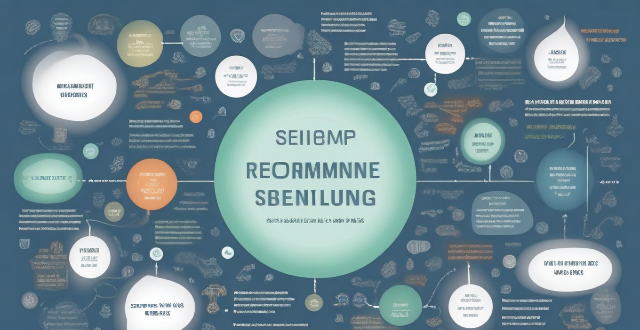
Can you recommend any websites or forums where fans discuss TV show spoilers and theories ?
This article recommends various websites and forums for TV show spoilers and theories, including Reddit, FanForum, Television, IMDb Message Boards, TV.com, Couchzone, TV Tropes, TV Insider Forums, Den of Geek Forums, and Quora Spaces. Each platform offers unique features such as subreddits, episode discussion threads, spoiler tags, theory sections, and more to facilitate discussions about recent episodes and potential future events in TV shows.

How does Cross-Border Payment work ?
Cross-border payments are transactions that involve transferring money between different countries. The process is complex and requires coordination among various parties, including banks, payment processors, and financial institutions. The steps involved in cross-border payments include initiation of the payment, verification and authorization, execution of the payment, and settlement and reconciliation. There are several methods available for cross-border payments, such as wire transfers, online payment platforms, and mobile wallets. Choosing the appropriate method ensures safe, secure, and efficient cross-border payments.

What are some common mistakes that writers make, and how can I avoid them ?
Common writing mistakes include grammar and punctuation errors, overuse of passive voice, redundancy, lack of clarity, and inconsistency in tone. To avoid these, proofread, learn grammar rules, use active voice, cut unnecessary words, outline ideas, and maintain consistent tone and style.

How can young people influence policymakers on climate change issues ?
Young people can influence policymakers on climate change issues by educating themselves and others, engaging in dialogue, using social media wisely, voting with climate in mind, joining or forming youth organizations, participating in demonstrations and protests, writing letters to policymakers, taking advantage of educational opportunities, promoting sustainable lifestyle choices, and leveraging art and creative works.
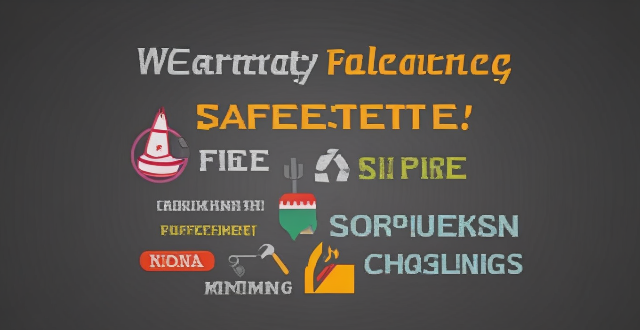
What are the different types of safety signs and their meanings ?
This text describes the different types of safety signs and their meanings. Prohibition, warning, mandatory, fire safety, first aid, and information signs are all used to provide important safety information in a variety of environments. Each type of sign has a specific shape, color, and symbol or text that conveys a particular message about what actions should or should not be taken.

What are some creative and personalized holiday gift ideas ?
The text provides creative and personalized holiday gift ideas, including personalized photo albums, DIY gift baskets, customized jewelry, homemade candles, and commissioned artwork. These gifts are thoughtful and unique, perfect for showing loved ones how much you care.

Is it possible to remotely lock my lost iPhone ?
Yes, it is possible to remotely lock your lost iPhone using the Find My app or iCloud. This feature allows you to locate, lock, and erase your device if it is lost or stolen. Here's how you can do it: 1. Sign in to iCloud.com/find on your computer or another iPhone and sign in with your Apple ID and password. 2. Click on the "All Devices" drop-down menu at the top of the screen and select the lost iPhone from the list of devices associated with your Apple ID. 3. Click on the "Actions" button (looks like a circle with a line through it) next to the selected device and choose "Loss Mode." Follow the prompts to set up a passcode for the locked device and enter a contact phone number where you can be reached. 4. Customize a message that will appear on the locked iPhone's display, such as "This phone has been lost. Please call [your phone number] if found." 5. Once you have entered all the necessary information, click on "Done" to activate Loss Mode on your lost iPhone. The device will now be locked and require the passcode you set up to unlock it. 6. If your lost iPhone is powered on and connected to Wi-Fi or cellular data, its location will be updated in real-time on the map within the Find My app or iCloud website. You can use this information to try and recover your device. 7. If you are unable to recover your lost iPhone, you can choose to erase all data from the device remotely by selecting "Erase iPhone" from the Actions menu. This will delete all personal information and restore the device to its factory settings, making it unusable without your Apple ID and password. However, keep in mind that erasing the device will remove any chance of tracking its location in the future.

How can I check the status of my tourist visa application ?
Checking the status of your tourist visa application can be a nerve-wracking experience, especially when you're eagerly anticipating your travel plans. Here's a step-by-step guide to help you through the process: 1. Determine the type of visa you applied for, as different visas might have different checking procedures. 2. Locate the appropriate government website or portal dedicated to visa services where you can check the status of your application. 3. Have your application details ready, such as Application ID Number, Passport Number, and Date of Birth. 4. Enter the required details into the online system on the visa status portal. 5. Submit the form and retrieve the status of your visa application. 6. Interpret the status message, which could indicate that your application has been accepted, is under review, requires administrative processing, has been issued, or has been refused. 7. Follow up if necessary with the embassy or consulate for any delays or further action required. Additional tips include keeping track of timelines, being patient as visa processing times can vary, and staying informed about any events that might affect processing times. By following these steps, you should be able to effectively check the status of your tourist visa application and plan accordingly.